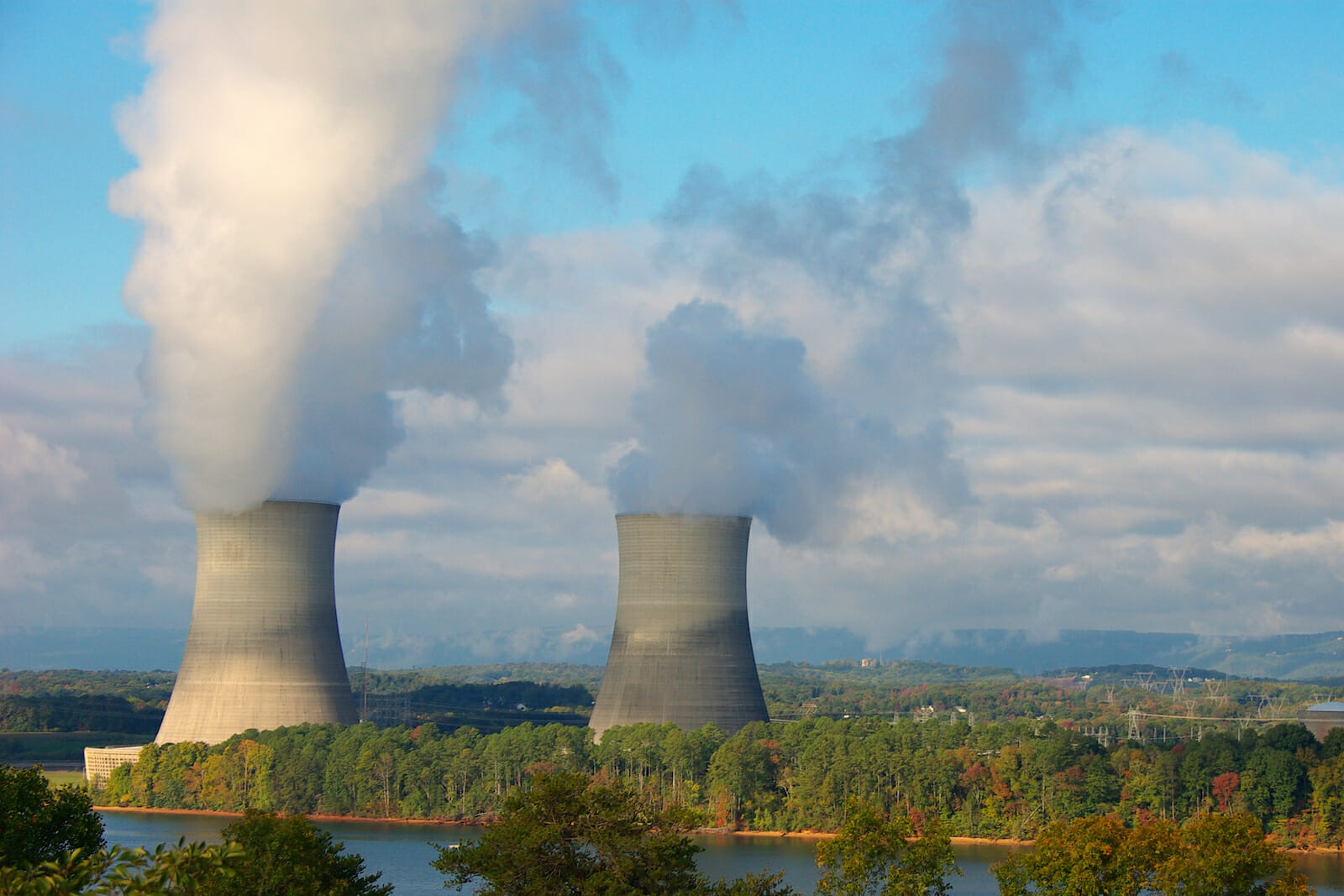
New Risks for U.S. Nuclear Power
In the past month, the White House has conveyed mixed messages about the president’s position on nuclear energy. Once praised at the highest levels as part of a wise “all of the above” energy strategy, commercial nuclear power was omitted from the State of the Union. Meanwhile, the president’s choice for Secretary of Energy, Dr. Ernest Moniz, supports a nuclear renaissance in America. As the White House refines its message on climate change for this congressional session, it should push nuclear power to the fringes of its energy policy.
Civilian nuclear power in the United States faces a new cluster of dangers unique to the 21st century energy market. These risks to public safety, considered alongside economic costs and waste management issues, render nuclear power an option of last resource for solving the climate crisis. First, the current U.S. fleet of nuclear plants is more vulnerable than ever before to cybersecurity threats. In the past decade, hackers have ritually mocked the U.S government and corporate standards for internet security. In 2011, hackers broke into the security division of EMC, an IT security firm used by the NSA, CIA, the Pentagon, the White House, and the Department of Homeland Security. The security firm called the attack “extremely sophisticated.”
The U.S. Secret Service testified in 2010 that “nearly four times the amount of data collected in the archives of the Library of Congress” was heisted from the United States. Mike McConnell, a former director of national intelligence, has said: “In looking at computer systems of consequence—in government, Congress, at the Department of Defense, aerospace, companies with valuable trade secrets—we’ve not examined one yet that has not been infected by an advanced persistent threat.”
The 2010 the Stuxnet computer worm attack demonstrated the vulnerabilities in foreign nuclear systems. The virus devastated Iran’s Natanz nuclear facility by infecting their centrifuge systems. The U.S. commercial nuclear fleet faces a similar threat. The Nuclear Energy Institute states that “critical computer systems used to control nuclear energy facilities are not connected to the Internet.”
Nuclear plants, however, routinely use software to run their digital computer systems. An individual computer or network could, therefore, be subject to infection by malware. If a nuclear control system were, hypothetically, connected to the internet, then hackers could target coolant level indicators. Such an attack could deceive plant operators and lead to a meltdown; indicator misinterpretation was a key factor in the Three Mile Island accident. Last year, the U.S. nuclear industry reported just six cyber attacks, but many successful crimes go unreported.
Second, the current effects of climate change pose a grave threat to nuclear safety. For example, wild fluctuations in annual and monthly precipitation—causing either droughts or flooding—can disrupt nuclear plant operations by raising or lowering intake water levels beyond protocol.
The worst example from recent world history is the Fukushima disaster in Japan; in 2011, a tsunami flooded the nuclear facility and caused a full meltdown in three reactors. Last fall, when Hurricane Sandy struck the Northeast, the Oyster Creek nuclear plant in New Jersey declared “alert” status “due to water exceeding certain high water level criteria in the plant’s water intake structure.” During the same storm, New Jersey’s Salem power plant shut down one of its reactors due to high water levels and debris in the Delaware River.
Drought can likewise threaten nuclear safety. One nuclear reactor uses 35-65 million liters of water per day; the fluid is used as a coolant. Localities across America, however, are suffering from seemingly interminable dry conditions. A recent study published in Environmental Science and Technology found that by 2050, one third of U.S. counties could face “high” or “extreme” risk of water shortage. The state of Florida must plan for both drought and flooding as it safeguards its nuclear facilities. Currently, southern Miami-Dade County, home to the Turkey Point nuclear power plant, is experiencing moderate drought conditions.
Turkey Point, moreover, sits at the very edge of the sea in south Florida, subject to the worst of hurricanes. When Hurricane Andrew delivered a direct hit to the facility in 1992, it caused relatively minimal damage. But decades of gradual sea level rise threaten to overwhelm coastal plants like Turkey Point with unprecedented storm surges. The nine U.S. nuclear plants located within two miles of the ocean were all built at least thirty years ago, before climate change was a factor in where they were situated. A 2011 study published in Energy Policy found that storm surges from Category 4 or 5 hurricanes could severely flood coastal U.S. nuclear power plants.
A similar problem caused by climate change, the intake of hot water, has disrupted reactor activity abroad. During the 2003 summer heat wave in France, a total of seventeen reactors operated at reduced capacity or were shut down. Patrice Lambert de Diesbach, an energy analyst at CM-CIC Securities in Paris, explained. “We are up against the maximum amount of hot water that can be released into rivers,” Diesbach said. “Unfortunately the situation is only going to get worse.”
Finally, as the baby boomer generation retires from active duty at nuclear facilities across America, the industry will lose vast stores of institutional knowledge just when it needs it most. The stock of commercial nuclear reactors was designed for forty years of service, but dozens of plants have had their licenses renewed for twenty years. These aging nuclear facilities will degrade and require more careful maintenance to meet safety protocols. The attention of veteran technicians will be essential.
Nuclear industry history has shown the perils of sending generalists to do a specialist’s job. In the 1960s, dozens of commercial plants were built and went online as industry advocates guessed just how cheaply the atom could generate enormous sums of energy. Much of the workforce employed by the first nuclear plants, however, came from the coal industry. In Joseph V. Rees’ book Hostages of Each Other, Boston Edison’s CEO reflected on the problem: “The early management problems can be attributed to Boston Edison’s attempt to manage Pilgrim Station using essentially the same practices as had been established for our fossil units without an adequate transition and adjustment for differences between the two technologies.” Other nuclear plants encountered similar challenges but pushed forward, hiring more and more operators experienced in enforcing fossil fuel industry safety standards.
Only after the Three Mile Island accident in 1979 did nuclear power executives begin to focus on the need for specialization and institutional knowledge. They acknowledged that the average nuclear plant contained thousands of more valves than the average coal plant. In the words of Three Mile Island’s CEO, the accident taught a “deceptively simple” lesson: “commercial nuclear power is a uniquely demanding energy source and requires extraordinary care and attention.” Working in an era of workforce transition, cyberwarfare, and climate change, today’s nuclear power plant operators have a heavy burden enforcing safety protocols. Mistakes are inevitable in such complex systems; even the migration patterns of jellyfish can disrupt the delicate balance requisite to keep a plant online.
The White House should downgrade nuclear energy from its current status as a tier one energy source for America. For the sake of public safety, it should cut off the spigot of federal nuclear subsidies, discourage new construction, and focus on ensuring safety compliance from the current fleet of plants. Renewable energy and energy efficiency are far more deserving of long-term investment.

